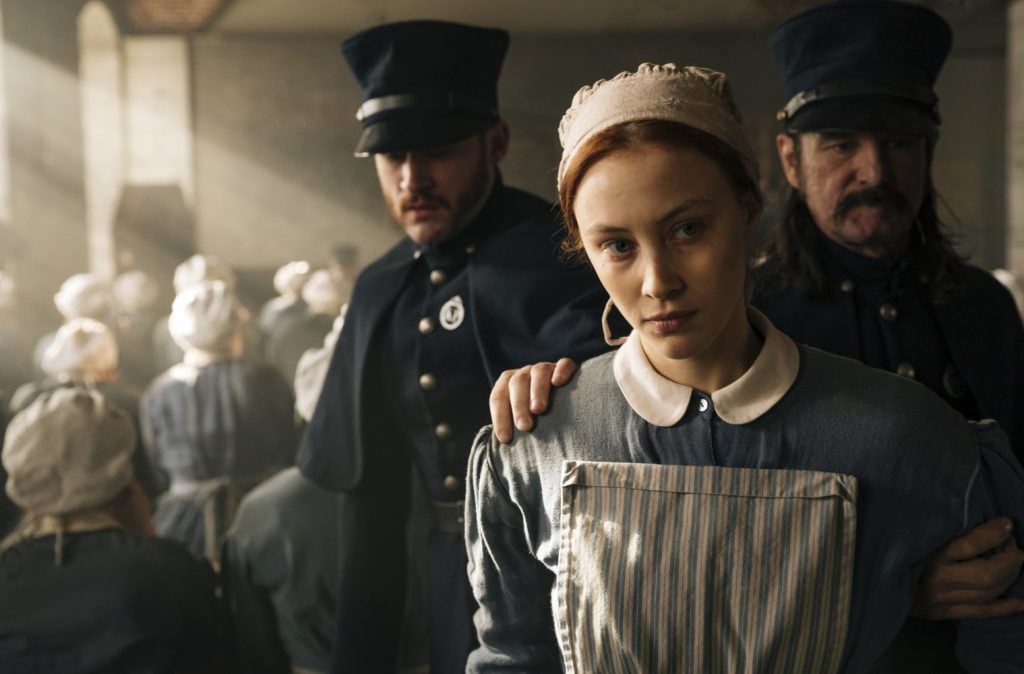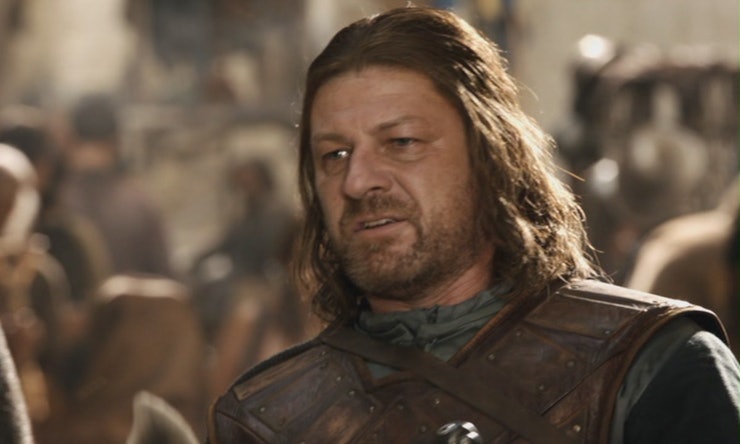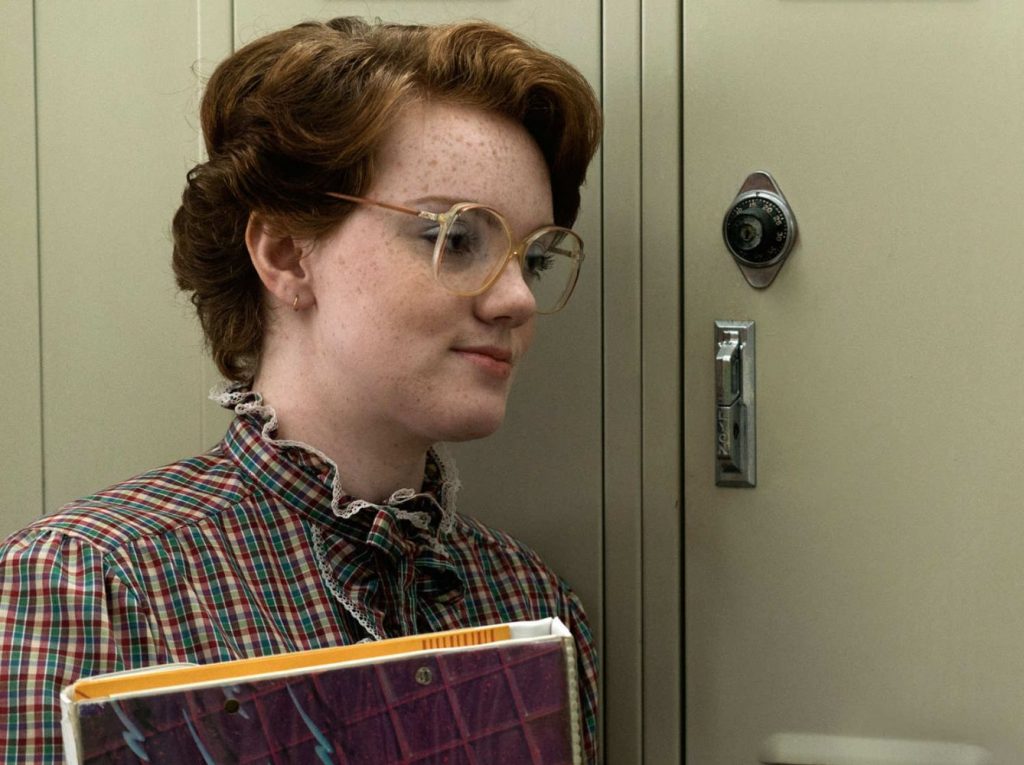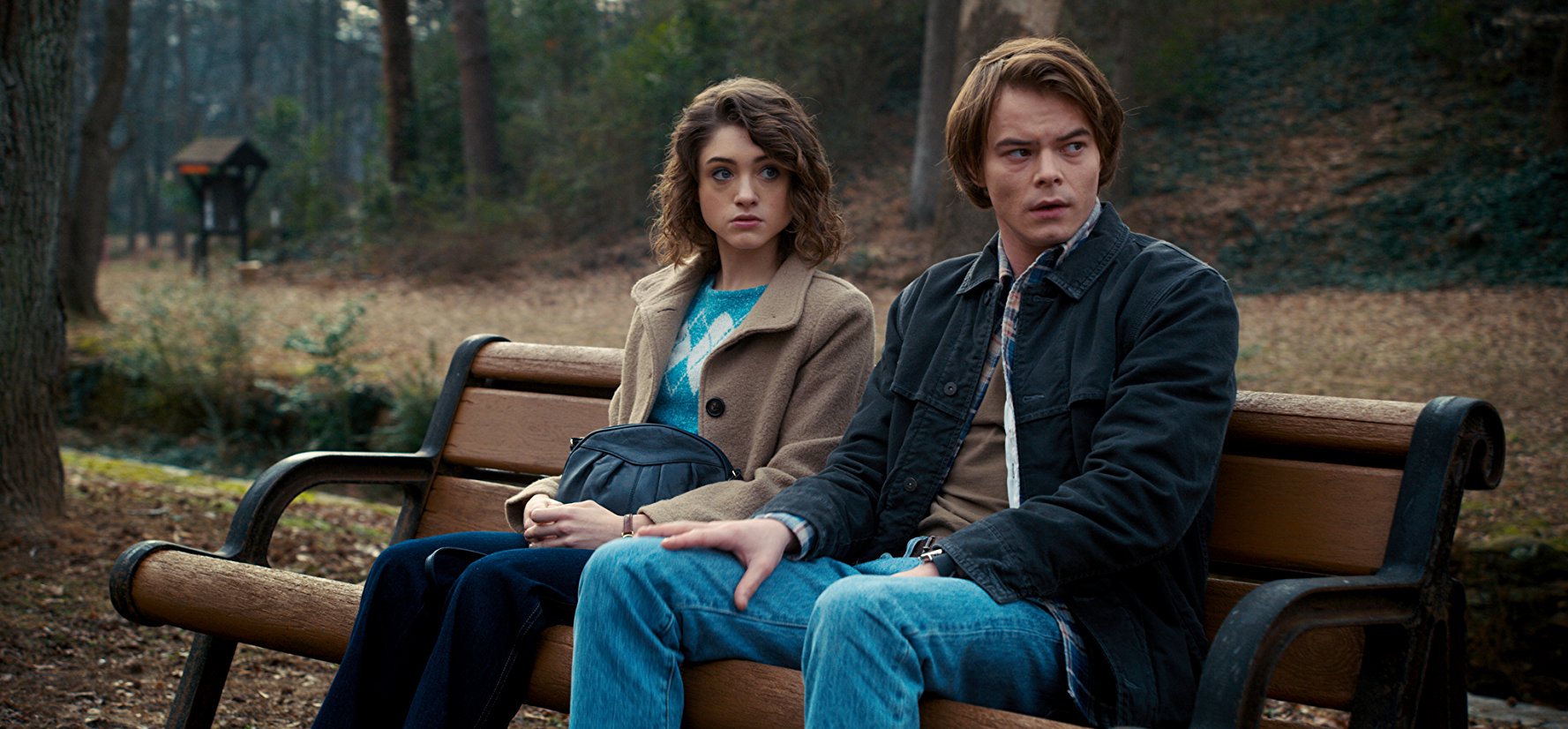
Stranger Things. Photo courtesy: Netflix
Anyone who’s been following the television industry – whether you write TV or simply watch it – knows the industry has changed dramatically over the past few years. Streaming platforms such as Netflix, Hulu and Amazon have upped the anti when it comes to fresh new shows like Stranger Things and rebooting classic stories like The Handmaid’s Tale. We’re also watching more limited series like the six-episode show Alias Grace instead of 22-espisode procedurals.
But as technology changes the way we watch TV, the question becomes: Does technology also change the way we write TV? Veteran film and TV writer, Neil Landau, says yes.
Sign up for ScreenwritingU’s Binge Worthy TV Writing Bootcamp Here!
His new book TV Writing on Demand: Creating Great Content in the Digital Era takes a deep dive into the ever-changing industry that’s fueled by new technology and the demand for well-written content across all platforms.
In addition to running the MFA Television Writing Program at UCLA, Landau has written such films and TV shows as Don’t Tell Mom the Babysitter’s Dead, Melrose Place, The Magnificent Seven and many others. His new book is a must-read for anyone trying to break into TV writing.

Sarah Gadon as Grace Marks in Alias Grace. Photo courtesy of Netflix.
Landau says that traditionally, some of the most successful shows have been procedurals with doctors, lawyers or law enforcement. These shows, along with most single-camera comedies, have a close-ended A story where you get a beginning, middle and a resolution all within the episode.
“Now,” says Landau, “because of on-demand, nobody’s ever going to miss an episode so everything – except for multi-camera sitcoms, is serialized. Instead of ‘case of the week,’ we have the season-long procedural with the slow-burn story.”
He says that instead of the story resolution coming at the end of an episode, it now comes at the end of the season.
This is a major break from the past where networks worried that if a viewer missed an episode or two, they wouldn’t return to the show because they feared they had missed too much.

Game of Thrones. Photo courtesy: HBO
“I don’t know a single person under 50 who watches TV in timeslots anymore unless it’s sports or a live event like the Oscars. It’s no longer appointment TV. The crude way of putting it is, TV used to be a one-night stand and now it’s a long-term relationship.”
This new, longer story format affects character development as well.
“It gives the creators the opportunity to go much deeper into character because they don’t have to keep resetting who people are and what’s going on. They know the audience is watching very carefully and are closely following the unfolding storylines.”
This makes the writer’s job both easier and harder, he says.
“It’s easier in that we know people are going to watch everything and track the story. But it’s harder because one, there’s just so much competition, and two, writers have to work a lot harder to go deeper into character details knowing the audience is paying that much attention. The writers have to work a lot harder to mine the unexpected.”

Neil Landau. Photo courtesy: Darlene Chan PR
To me, Landau hits the nail on the head with the idea of writers having to mine the unexpected. We hate when our favorite characters (like Ned Stark in Game of Thrones) are killed off, but it’s also exhilarating because the story takes a wild turn we never saw coming. It gives us a moment where we believe anything can happen in this TV world, breaking us out of our own monotonous lives.
Landau says another way technology has changed the way we write TV is the absence of a weekly airdate.
“When you’re doing a streaming show where the episodes release all at once, you don’t have to lock anything until they’re all finished. Meaning they can edit, fine-tune, restructure – even do pickups – up until the whole episode drop. This is both a blessing and a curse.”

Stranger Things. Photo courtesy: Netflix
It’s a blessing because you can really tell a specific story where all the episodes fulfill your vision, but a curse if you do kill off the character that becomes an unexpected audience favorite (Like Barb in Stranger Things). If a show airs week to week, you can go on social media and see what the audience likes and dislikes and course correct to that.
The other major change in TV writing is that streaming networks are not beholden to advertisers the way traditional broadcast networks are.
“There are no Standards and Practices. It’s why Shonda Rhimes (Scandal) and Ryan Murphy (America Horror Story) have left ABC, FX and Fox to go to Netflix. They can have nudity, swear words – there’s no limitations. They don’t have to worry about offending advertisers – which is what Standards and Practices is all about. It’s not about censorship for the audience.”
Landau says that traditionally, when broadcast network television is written, no one knows who the advertisers are going to be. “They have to keep content safe because you could end up having Johnson & Johnson sponsoring a show that has some very controversial storyline and they end up pulling their commercials. The streaming networks don’t have to worry about that.”
The good news in all of this is that we’re living in a time where low-cost, easy to access entertainment is fresh, niche, edgy and provocative. Smart writers working on their own original pilots should take a cue from these non-formulaic shows and write to fulfill that mandate. My biggest takeaway from Landau’s book is that, in this new world where technology is driving us as writers, there’s no room to play things safe.




2 Replies to "How TV went from 'one-night stand' to a 'long-term relationship'"
Les Bowser February 19, 2018 (12:32 pm)
True, streaming networks are not beholden to advertisers today, but TV is still TV.
Seventeen years ago television producer Phillip M. Goldfarb (Taxi Driver, NYPD Blues, LA Law, Doogie Howser…) wrote, “Television is not about the content. Television is about the commercials.”
Things are changing, but so is the weather.
Patti Meyers February 20, 2018 (9:21 am)
I pass on bingeworthy TV…have absolutely no desire to see naked people or listen to the F bomb. Unfortunately my grandmother does not share my feelings! who says it’s for people under 50? takes all kinds…